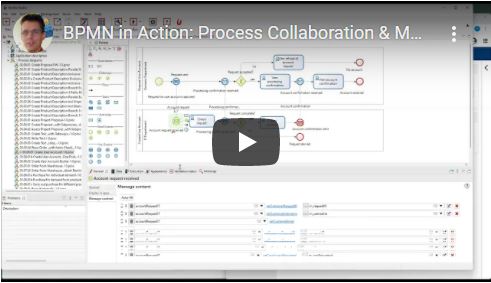A special feature of BPMN compared to other process modelling notation is the possibility to model process collaborations. A collaboration consists of two or more separate processes that communicate via message flow. A process can send a message that starts another process, or a message is sent to an existing process instance that has already been waiting for this message at a message-catching intermediate event.

It is common to use collaborations for modelling the interactions between different business partners, e. g. between the procurement process of a customer and the order handling process of a supplier. However, business partners usually don’t use a shared BPMS platform. Does it also make sense to use collaborations within a single organization – although the same behaviour could be achieved by modeling a single process with several lanes?
The answer is yes, since the separation into different processes supports loose coupling, process re-use and separation of concerns.
The video presents a model of a collaboration and its execution by a processes engine. It also shows how to use a correlation in order to make sure that messages are received by the correct process instances.